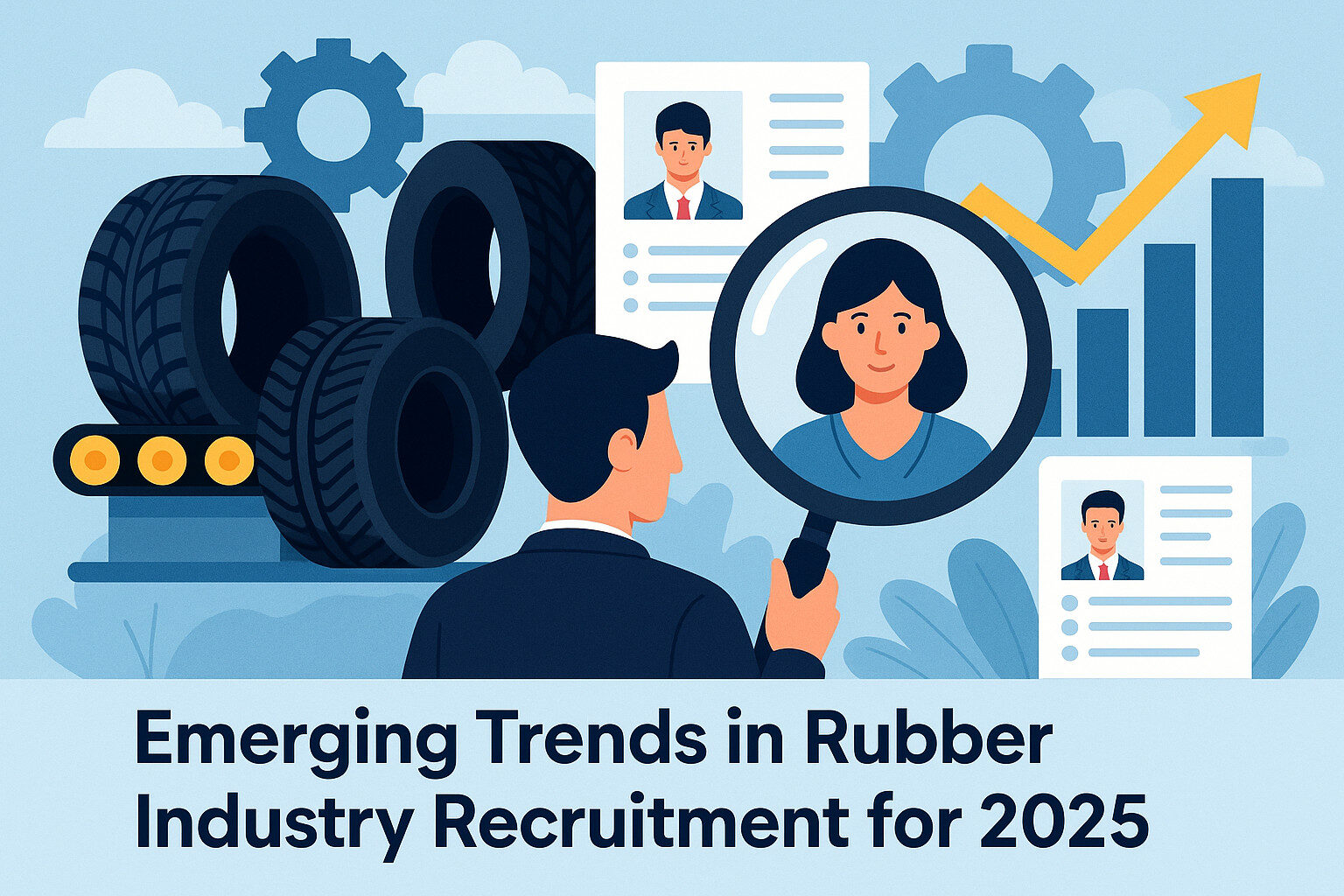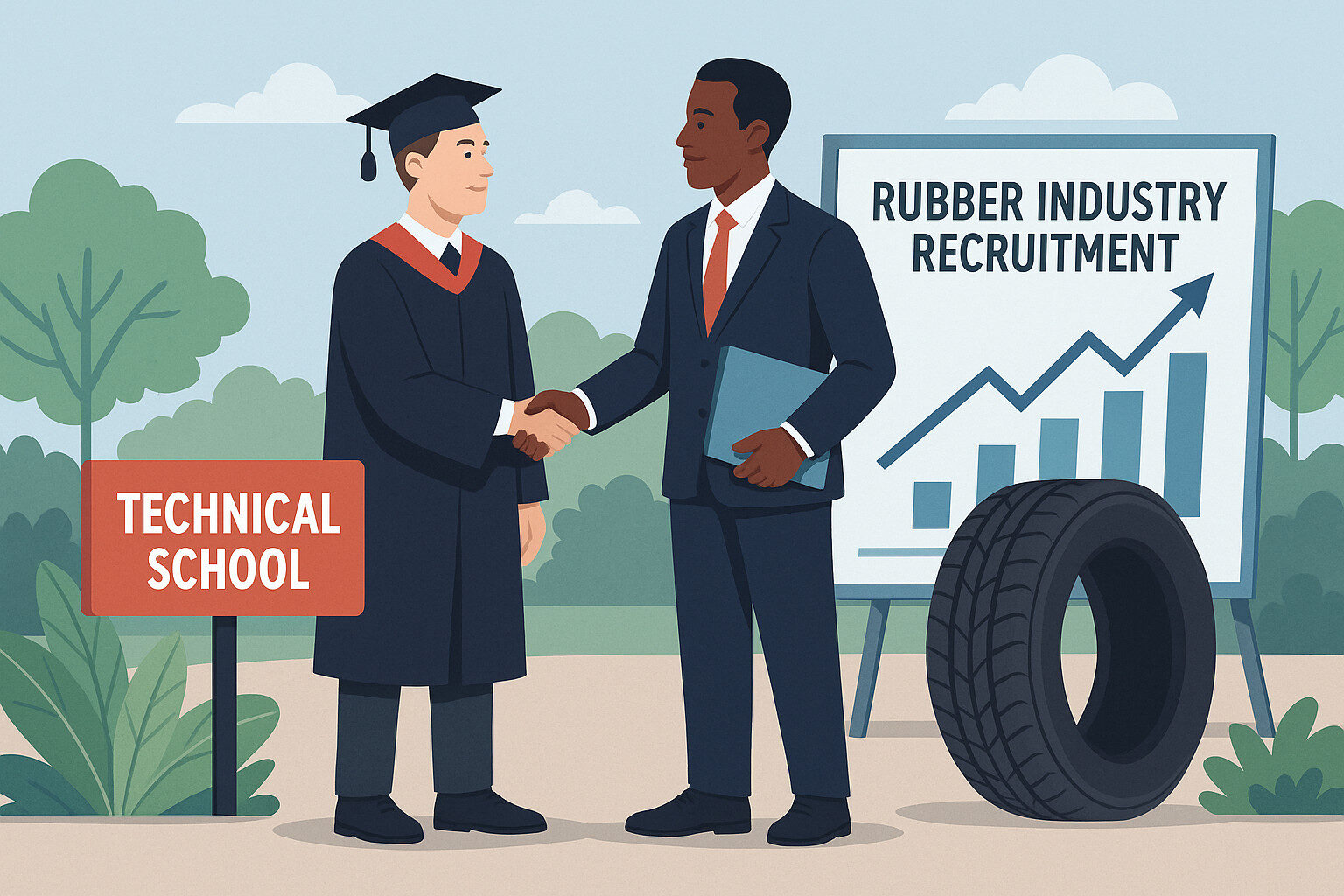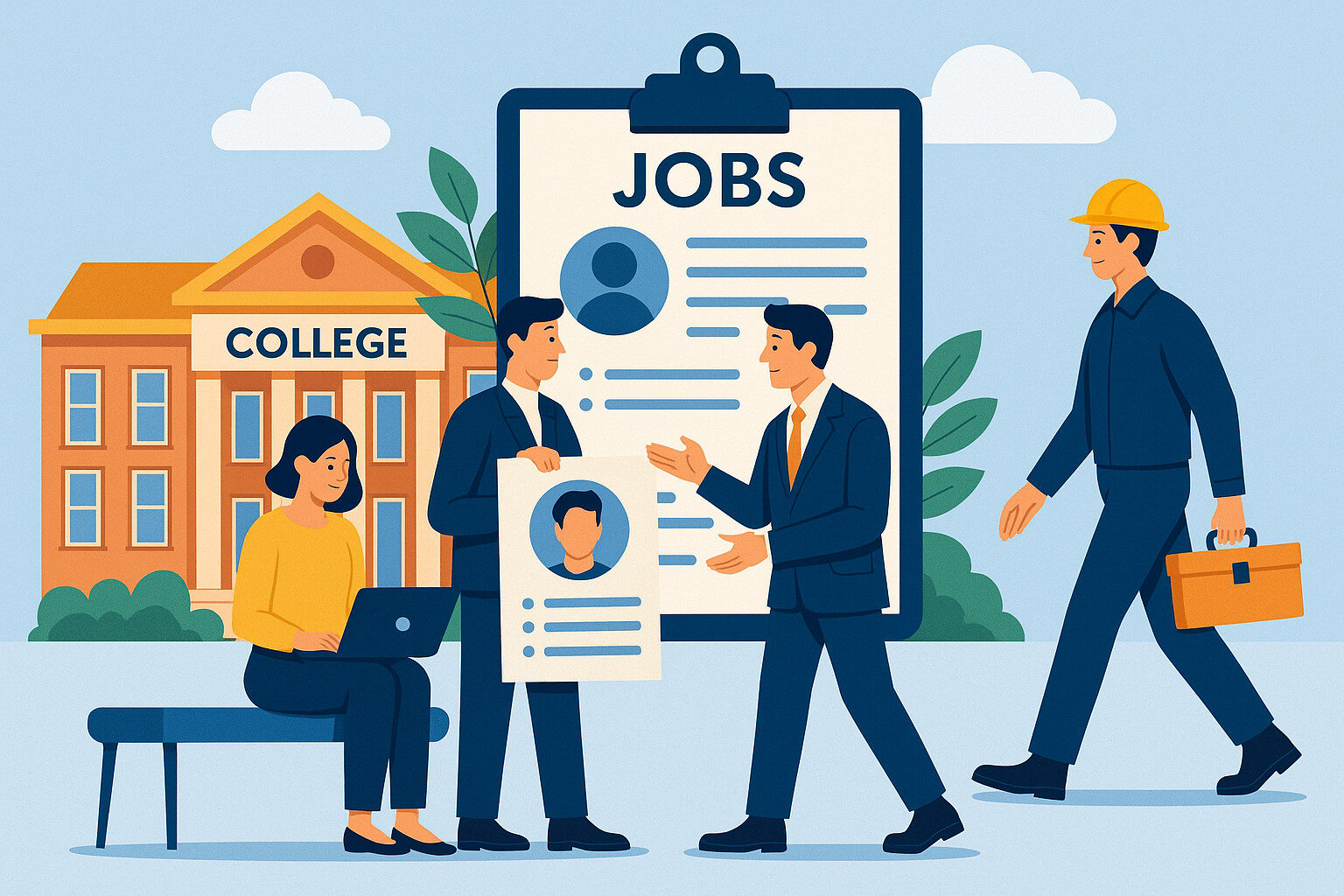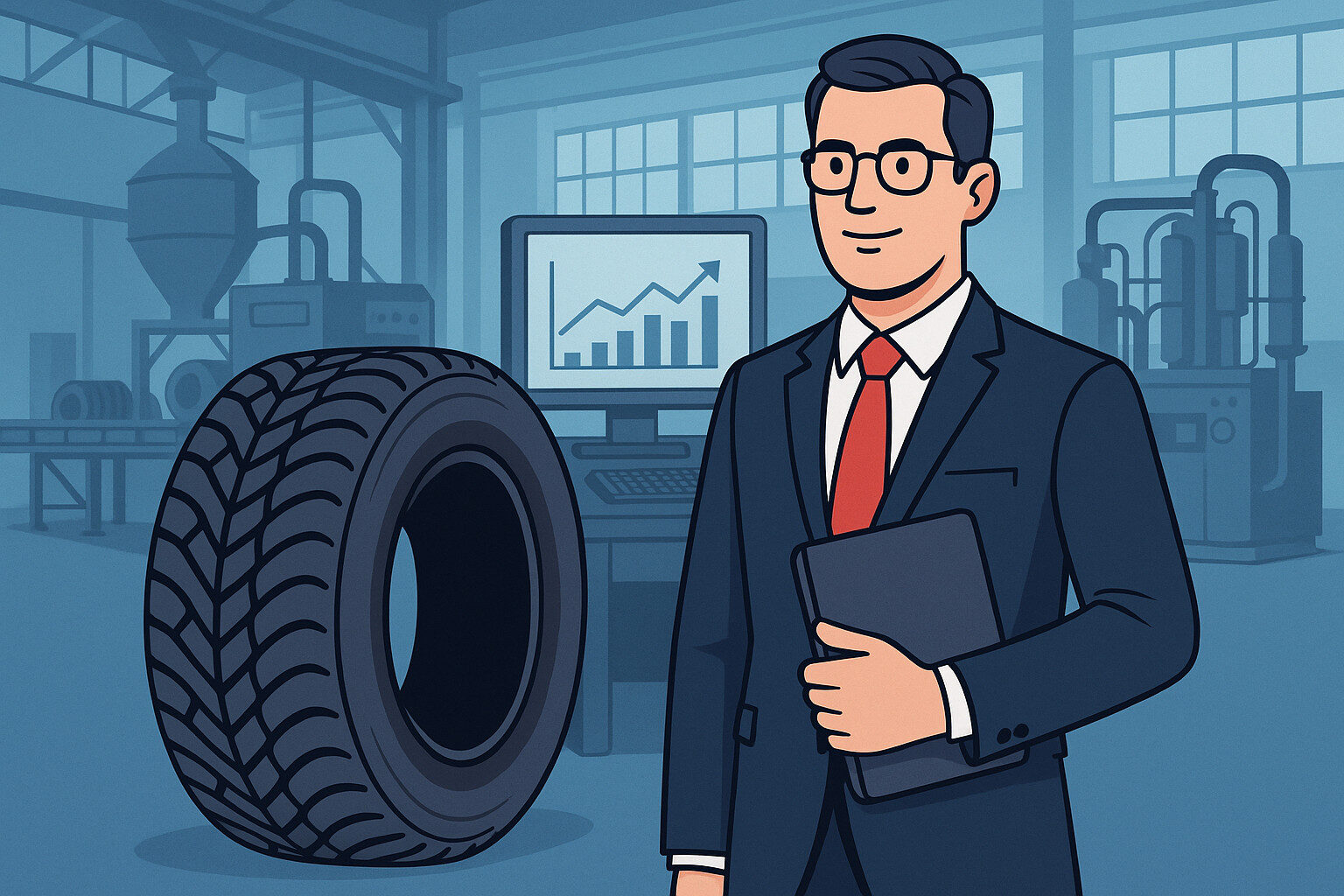Rubber Industry Recruitment for 2025
The rubber industry recruitment for 2025 is undergoing a transformative shift driven by automation, sustainability mandates, and a generational change in the workforce. With the U.S. rubber manufacturing sector poised for substantial growth—fueled by infrastructure investments, electric vehicle demand, and global supply chain realignment—employers must adopt innovative hiring strategies to attract and retain top talent.
This article explores the key trends influencing recruitment in the rubber industry, supported by current data, market insights, and practical recommendations for hiring teams navigating today’s labor market.

1. The Shrinking Skilled Labor Pool
Retirement Cliff Ahead
The rubber industry, like much of U.S. manufacturing, is facing a mass exodus of experienced leadership. According to the Manufacturing Institute, over 2.1 million manufacturing jobs in the U.S. could go unfilled by 2030 due to retirements and skill shortages.
Rubber industry hubs like Ohio, Michigan, and South Carolina are especially impacted, as decades of institutional knowledge at the leadership level exits the workforce. This growing leadership vacuum is hitting critical roles such as:
- Plant Managers
- Operations Directors
- Head of Sales
- Quality Assurance Managers
- VP of Manufacturing
- Chief Supply Chain Officers
- Production Planning Heads
These are the individuals responsible for driving efficiency, quality, and throughput across complex, multi-line facilities—making them essential to long-term business continuity.
2. A New Generation of Workers Has Different Priorities
Digital Natives Expect More
Millennials and Gen Z are now the largest segment of the workforce. Unlike their predecessors, they prioritize:
- Career development and training
- Work-life balance and wellness
- DEI (Diversity, Equity, Inclusion) in leadership
- Purpose-driven work and sustainability
This shift forces rubber companies—often perceived as “old economy”—to rebrand their culture, benefits, and recruitment outreach.
Actionable Insight:
Companies must improve their employer branding on platforms like LinkedIn, Glassdoor, and Indeed. Videos, employee testimonials, and clear advancement paths can drive engagement from younger candidates.
3. Technology Is Reshaping Hiring Processes
AI-Powered Recruiting
Leading rubber manufacturers are leveraging AI-based 5 step based recruitment frameworkand skill-based matching to speed up recruitment. These tools help filter candidates for certifications, past experience, and even soft skills.
Predictive Analytics
HR teams are now using analytics to:
- Forecast turnover risks
- Identify top-performing employee profiles
- Optimize job descriptions based on applicant behavior
4. Demand for Tech-Enabled Roles in Rubber Sector

The Rise of Mechatronics and Automation Talent
As factories modernize with robotics, IoT sensors, and ERP systems, traditional manufacturing jobs are giving way to hybrid tech-manufacturing roles like:
- Automation engineers
- Control systems technicians
- Digital transformation leads
- Data-driven quality assurance roles
Skill Gaps
According to Deloitte’s 2025 forecast, 60% of manufacturers report they can’t find talent with the right tech skills.
5. Diversity and Inclusion Becoming Competitive Advantage
Global Influence, Local Diversity
With increased global partnerships and a shifting U.S. demographic, inclusive hiring is now a must-have rather than a nice-to-have. Diverse teams are proven to improve innovation and problem-solving—crucial in complex manufacturing operations.
Companies are investing in:
- Women in Manufacturing programs
- DEI training for plant leaders
- Inclusive job description software (e.g., Textio)
6. Upskilling and Internal Mobility
Build vs. Buy Talent
In 2025, more companies are focused on upskilling existing workers rather than relying solely on external hires. This includes:
- Cross-training operators in quality and safety
- Supporting technical certifications (e.g., Six Sigma, PLC Programming)
- Promoting from within to reduce turnover
According to LinkedIn’s Workforce Report, internal hires perform 20% better and stay 41% longer.
7. Recruitment Marketing Is Non-Negotiable
Recruitment = Marketing + Analytics + Brand
Filling critical roles now requires a marketing mindset. Companies that fail to invest in recruitment marketing are invisible to high-value talent.
Top-performing employers now use:
- Geo-targeted job ads in areas with similar industries
- Short-form video job previews showing real workplace culture
- Campaign-based outreach timed with training program launches
8. Partnerships with Technical Schools and Colleges

Campus Hiring, Reimagined
Rather than general job fairs, rubber employers are forming curriculum-aligned partnerships with technical colleges. Example programs:
- Rubber Engineering Technology at Ferris State University
- Polymer Science Programs at University of Akron
This builds an early talent pipeline and increases brand loyalty before graduation.
9. Incentives and Flexibility Are Critical Levers
Beyond Wages
Wages still matter, but Gen Z and millennial workers care more about:
- Paid training and upskilling
- Commuting assistance or relocation help
- Health and wellness perks
- Flexible shifts or 4-day work weeks
Companies offering creative perks report 25-30% higher applicant volume, even in competitive markets like Texas and Georgia.
10. Employer Reputation Now Impacts Production
Reputation = Productivity
In the digital age, reputation directly affects hiring and retention. A poor score on Glassdoor or low Indeed reviews results in ghosted interviews, low acceptance rates, and more no-shows.
Solution: Invest in internal communication, recognize front-line leaders, and encourage honest employee feedback loops.
Conclusion: Rubber Industry Recruitment in 2025 Requires a Modern Playbook
To remain competitive in 2025 and beyond, rubber industry employers must evolve their approach to hiring. That means:
- Embracing digital recruiting tools
- Investing in training and internal growth
- Focusing on diversity, flexibility, and culture
- Collaborating with educational partners
- Treating hiring like a revenue-driving function
The rubber industry is no longer “old school.” It’s a vital part of U.S. manufacturing growth, and the companies who lead on talent will dominate the next decade.
Key Takeaways
Trend | What It Means for Employers |
Retirements | Urgent need for succession planning and knowledge transfer |
Gen Z Workforce | Improve branding, benefits, and flexibility |
Tech Integration | Upskill for automation and predictive analytics |
Diversity Demands | Launch inclusive hiring initiatives |
Competitive Hiring | Invest in marketing, incentives, and campus partnerships |




